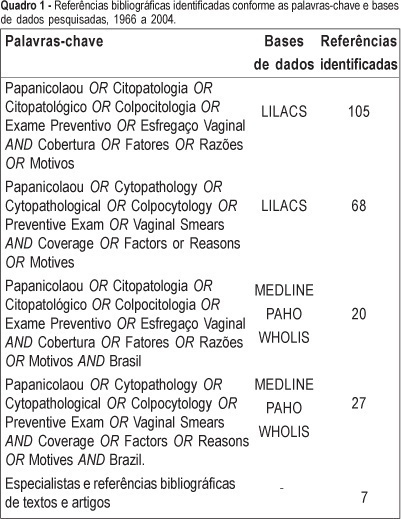You searched for:"Luís Felipe Leite Martins"
We found (2) results for your search.-
Original Article
Human Papillomavirus 16 Lineage D is Associated with High Risk of Cervical Cancer in the Brazilian Northeast Region
Rev Bras Ginecol Obstet. 2023;45(8):474-479
Summary
Original ArticleHuman Papillomavirus 16 Lineage D is Associated with High Risk of Cervical Cancer in the Brazilian Northeast Region
Rev Bras Ginecol Obstet. 2023;45(8):474-479
Views5See moreAbstract
Objective
Similar to Human Papillomavirus (HPV) genotypes, different lineages of a genotype also have different carcinogenic capabilities. Studies have shown that specific genotype lineages of oncogenic HPV are associated with variable risks for the development of cervical intraepithelial neoplasia (CIN2/CIN3) and cervical cancer. The present study aimed to analyze the genetic diversity of the HPV16 genotype in women with CIN2/CIN3 and cervical cancer, from the northeast region of Brazil.
Methods
A cross-sectional multicenter study was conducted in the northeast region of Brazil, from 2014 to 2016. This study included 196 cases of HPV16 variants (59 and 137 cases of CIN2/CIN3 and cervical cancer, respectively). The difference of proportion test was used to compare patients with CIN2/CIN3 and cervical cancer, based on the prevalent HPV16 lineage (p < 0.05).
Results
According to the histopathological diagnosis, the percentage of lineage frequencies revealed a marginal difference in the prevalence of lineage A in CIN2/CIN3, compared with that in cervical cancer (p = 0.053). For lineage D, the proportion was higher in cancer cases (32.8%), than in CIN2/CIN3 cases (16.9%), with p = 0.023.
Conclusion
HPV16 lineage A was the most frequent lineage in both CIN2/CIN3 and cervical cancer samples, while lineage D was predominant in cervical cancer, suggesting a possible association between HPV16 lineage D and cervical cancer.
-
Original Article
Coverage of the Pap smear in Brazil and its determining factors: a systematic literature review
Rev Bras Ginecol Obstet. 2005;27(8):485-492
Summary
Original ArticleCoverage of the Pap smear in Brazil and its determining factors: a systematic literature review
Rev Bras Ginecol Obstet. 2005;27(8):485-492
DOI 10.1590/S0100-72032005000800009
Views0See morePURPOSE: to present an overview of the coverage of the Pap smear in Brazil, emphasizing the determinant factors associated with failure of women to submit to the test. METHODS: the literature was reviewed using the LILACS (Latin-American and Caribbean Literature in Sciences of the Health), MEDLINE – 1966 to 2004 (International Literature in Sciences of the Health), PAHO (Collection of the Library of the Pan-American Organization of Health), and WHOLIS (System of Information of the Library of OMS) databases. The review was enlarged through the search of bibliographical references of relevant studies, request for published and unpublished studies by specialists, and other sources. Articles that fulfilled the following criteria were selected: to be a cross-sectional study, carried out in Brazil, including information about periodicity of the Pap test (some time in life or in the last three years) and/or containing information about factors associated with failure of women to submit to the test. Duplicates and articles without summary were excluded. A total of 13 articles fulfilling these criteria were selected. RESULTS: there are few studies on the coverage of Pap smear in Brazil. Most of them are concentrated in the big cities of the South and Southeast regions of the country. Besides the shortage, little methodological standardization exists in relation to the sampling and profile of the investigated women, which turns difficult the comparison among them. These methodological differences must have contributed to the great variability found in the coverage. However, in spite of all of the problems, a trend of time series increase is observed in the percentage of women who had at least one Pap smear in life. The two studies accomplished in the eighties showed coverage of 55.0 and 68.9% some time in life, while a household survey carried out in 2002 and 2003 presented values that varied from 73.4 to 92.9%; however, two studies of national inclusion presented estimates below 70.0% in the last three years. On the other hand, some variables were associated with the women’s failure to submit to the Pap smear: low socioeconomic level, low education, low family income, and to belong to the younger age groups. CONCLUSION: the data here presented point to regional inequalities in the coverage of the Pap smear in the Brazilian female population and to the need of intervention targeted to those factors associated with women’s failure to submit to the Pap smear.

Search
Search in:
Tag Cloud
breast (42) breast cancer (42) breast neoplasms (95) Cesarean section (72) endometriosis (66) infertility (56) Maternal mortality (43) menopause (82) obesity (58) postpartum period (40) pregnancy (225) Pregnancy complications (99) Prenatal care (68) prenatal diagnosis (50) Prevalence (41) Quality of life (51) risk factors (94) ultrasonography (79) urinary incontinence (40) women's health (48)


